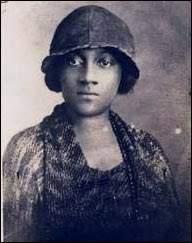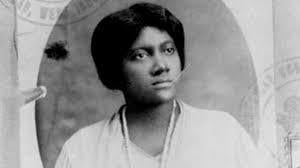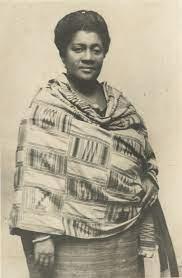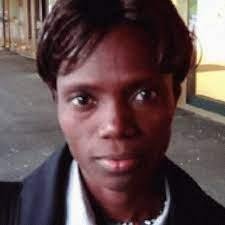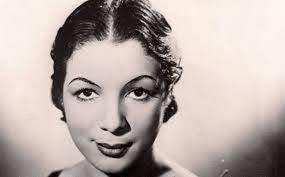Amy Ashwood Garvey (1897-1969 is acknowledged as building upon the feminist activist work of African and Caribbean feminists before her. She made significant contributions to the Pan Africanist movement, feminism and community development in Britain, the Caribbean and West Africa. She was married to the political activist Marcus Garvey.
1897
1969
Port Antonio, Jamaica
Jamaican PanAfrican heritage
1918- Ashwood reunited with Marcus Garvey and this marked the beginning of Ashwood’s important role in the development of the Universal Negro Improvement Association (UNIA) branches
1918- The ACL launched the newspaper Negro World
1919- The ACL launched a shipping business
1920s- Ashwood branched out into the world of theatre, staging three musical shows
1924- Held a number of informal meetings for the Nigerian Progress Union
1925- Co-founded the influential West African Students’ Union with Ladipo Solanke
1934- Ashwood and her partner Sam Manning set sail for London
1936- Opened the nightclub the Florence Mills Social Parlour
1944- Campaigned for Adam Clayton Powell, who became the first AfricanAmerican to be elected to Congress from New York
1957- Ashwood and Claudia both became involved in the West Indian Workers and Student Association
1958- Launched the West Indian Gazette, the first commercial Black newspaper in Britain
2009- The Nubian Jak Community Trust unveiled a plaque honouring Ashwood
Amy Ashwood Garvey was born in Port Antonio, Jamaica, but spent most of her childhood in Panama. When young Amy Ashwood asked about her African past her father, Delbert Ashwood, introduced her to her great grandmother Grannie Dabas. She would later facilitate Ashwood’s journey to Ghana in 1947 to meet the descendants of her great grandmother’s parents. Her father was also a successful baker who owned businesses in the Panama Canal Zone and in Colombia. Ashwood’s mother was named Maudriana Thompson.
Ashwood returned to Jamaica as a teen and attended Westwood High School in Trelawney, where she met her future husband, Marcus Garvey, in 1914. They were both passionate about African American activism and were involved in political activities that influenced their thoughts, ideas and strategies for liberating Jamaica.
In 1916 they became secretly engaged. Ashwood’s parents did not approve and arranged for her to return to Panama that year. Garvey headed for the United States in the spring of that year.
However, Garvey and Ashwood were reunited in September of 1918 in New York City, New York. This marked the beginning of Ashwood’s important role in the development of the Universal Negro Improvement Association (UNIA) branches. Despite their age difference, Ashwood was his equal. A Bureau of Investigation special agent who had been detailed to keep an eye on UNIA described Ashwood as Garvey’s ‘chief assistant, a kind of managing boss.’ A month after she arrived in New York, she was made general secretary of UNIA and she and Garvey travelled together to drive up membership. The organisation had also established a commercial arm, the African Communities League (ACL), which launched a newspaper, Negro World, in 1918 and a shipping business in 1919, to carry both freight and passengers across the Atlantic. Ashwood wrote for the paper and was one of the first directors of the Black Star Line Shipping Company.
As UNIA grew across and outside the United States and Garveyism became the name of the ideology, Ashwood wanted her role in its creation to be remembered and acknowledged and being known as ‘the first wife of Marcus Garvey’ imbued her with a level of status she needed. So, while she wanted nothing to do with Marcus personally, she continued to use her husband’s surname for the rest of her life and when he died in 1940 even fought successfully for control of his remains.
Ashwood met Marcus Garvey in 1914. Ashwood’s mother was deeply concerned about the blossoming relationship between Ashwood and Marcus and her parents decided to take her back to Panama. In March 1916, Marcus moved to New York to set up a base in Harlem, where he soon drummed up support from backers including the cosmetics entrepreneur Madam C JWalker. By late 1918, Ashwood was able to rejoin him.
On 14 October 1919 George Tyler invaded the UNIA offices and fired three shots at Marcus. Ashwood threw herself in front of him to prevent further injuries and two months later on Christmas Day the couple were married, with a huge reception at the UNIA headquarters, Liberty Hall, attended by 3,000 people. Ashwood later described Marcus as an autocratic and vain man who craved the spotlight and their marriage ended by early 1920.
https://gcadvocate.com/2016/10/18/amy-ashwood-garvey-bibliographic-essay/
https://web.archive.org/web/20160804154411/http://agi.ac.za/sites/agi.ac.za/files/features_-_the_first_mrs_garvey_and_others-_pan-africanism_and_feminism_in_the_early_20th_century_british_colonial_caribbean.pdf
